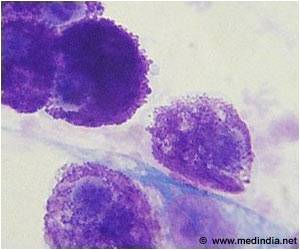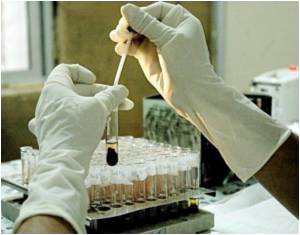A new approach, combining the forces of immunotherapy and chemotherapy in a nonconventional way, helped treat a three-year-old boy's neuroblastoma.

‘A novel combination of chemotherapy and immunotherapy drugs was used to treat neuroblastoma in a three-year-old boy.’





Surgery helped remove some of the tumor, but not enough. So doctors at University of Michigan's C.S. Mott Children's Hospital took a new approach, combining the forces of immunotherapy and chemotherapy in a nonconventional way. After 17 rounds of the combination treatment, Emil's tumor was completely gone.
The now-kindergartner is among a group of patients with hard-to-treat neuroblastoma who responded so well to the novel treatment combination in a Children's Oncology Group international clinical trial that researchers plan to expand the study to include more children. C.S. Mott pediatric oncologist Rajen Mody led the research and was to present the preliminary findings at the American Society of Clinical Oncology meeting.
When standard therapies don't work like in Emil's case, or the cancer returns, the battle against the disease is grim - less than 5% of these young patients survive.
After the first year of receiving the novel treatment combination in the COG trial, nine out of 17 children with relapsed or resistant neuroblastoma saw either a complete or partial remission - a 53% response rate compared to the typical 10-12% response rate from chemotherapy or biologic therapy alone.
Advertisement
The phase II COG trial involved 35 patients, but researchers are planning to open a larger form of the trial soon.
Advertisement
Typically, patients with neuroblastoma undergo one of two types of therapy - chemotherapy, which uses drugs to stop or slow the growth of cancer cells, or immunotherapy, which stimulates the immune system to work harder or smarter to attack cancer cells. The two treatments have typically always been used on their own, however, not simultaneously.
The COG trial provided patients with a novel combination of chemotherapy and immunotherapy drugs to re-engage the immune cells to recognize and attack the cancer cells. The combination has been used successfully in other diseases, such as lymphoma.
Emil's mother Feruza Alishanova recalls watching her son get weaker every day while the cancer got stronger, and the disease seeming unbeatable with every chemo treatment. She says she's thankful he responded to the new therapy and hopes more research helps other children, too. Emil, now six years old, graduates from kindergarten in June in Okemos, Michigan.
"What we are learning through this research could revolutionize treatment for children with relapsed or hard to treat neuroblastoma," Mody says. "We hope this is the beginning of a path to learning how to cure cancer in more children facing this devastating disease."
The new research comes on the heels of additional major findings in the area of precision oncology released by U-M in 2015 involving genome sequencing to help determine best treatment options for children with rare, aggressive and advanced cancer.
Source-Newswise















